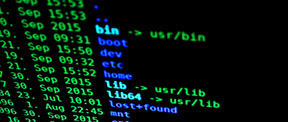**Yes: A Simple Yet Powerful Linux Command for Generating Text**
The `yes` command is a simple yet versatile text-generating tool available on most Linux systems. It can be used to generate repetitive text patterns, create files filled with specific characters, or provide continuous input to other commands.
**Syntax**
The syntax of the yes command is as follows:
“`
yes [OPTION]… [STRING]…
“`
**Options**
The following options are available for the yes command:
* `-h`, `–help`: Display help information and exit.
* `-V`, `–version`: Display version information and exit.
* `-n`, `–number=NUMBER`: Specify the number of times to repeat the given string.
* `-r`, `–raw`: Do not interpret backslash escapes in the given string.
* `-s`, `–separator=STRING`: Specify a separator to be used between each repetition of the given string.
**Examples**
Here are a few examples of how the yes command can be used:
* **Generate a file filled with a specific character:**
“`
yes a > file.txt
“`
This command will create a file called `file.txt` and fill it with the letter `a`. The `>` operator redirects the output of the yes command to the file.
* **Generate a continuous stream of text:**
“`
yes | more
“`
This command will generate a continuous stream of text that will scroll through the terminal window. The `|` operator pipes the output of the yes command to the `more` command, which displays the text one page at a time.
* **Provide continuous input to another command:**
“`
yes | command
“`
This command will provide continuous input to the specified command. For example, the following command will run the `ping` command and continuously send it a `y` response:
“`
yes y | ping google.com
“`
**Conclusion**
The yes command is a simple yet powerful tool that can be used to generate text in a variety of ways. It is a valuable addition to any Linux user’s toolkit.
**Bonus Use Case: Generating Random Passwords**
The yes command can also be used to generate random passwords. To do this, simply use the following command:
“`
yes ‘abcdefghijklmnopqrstuvwxyzABCDEFGHIJKLMNOPQRSTUVWXYZ0123456789!@#$%^&*’ | tr -dc ‘a-zA-Z0-9!@#$%^&*’ | fold -w 16 | head -n 1
“`
This command will generate a random password that is 16 characters long and contains a mix of uppercase and lowercase letters, numbers, and symbols. You can adjust the length of the password by changing the value of the `-w` option in the `fold` command.
Remember to use the command in a private environment and to change the password once you’re done to ensure maximum security.
